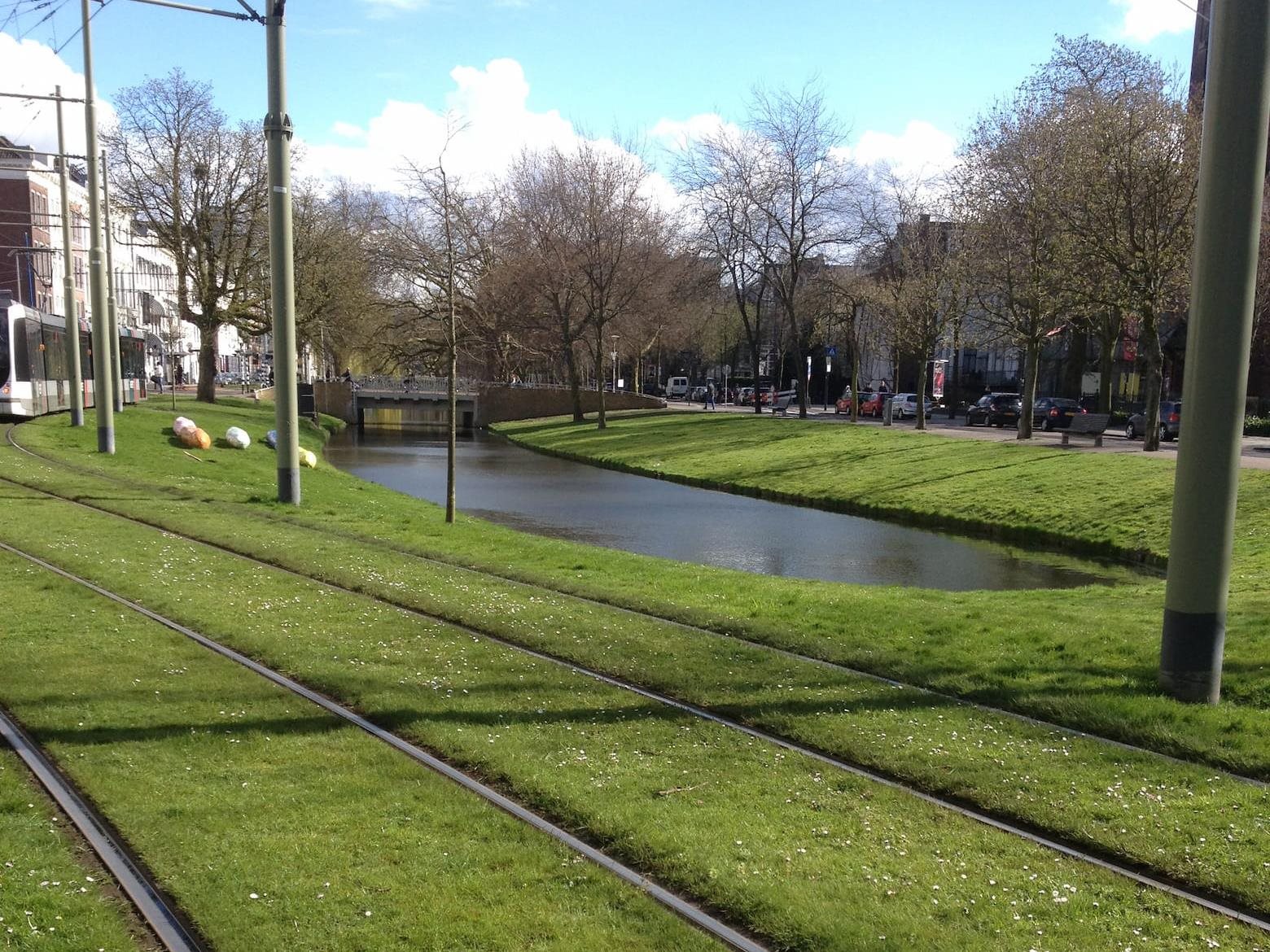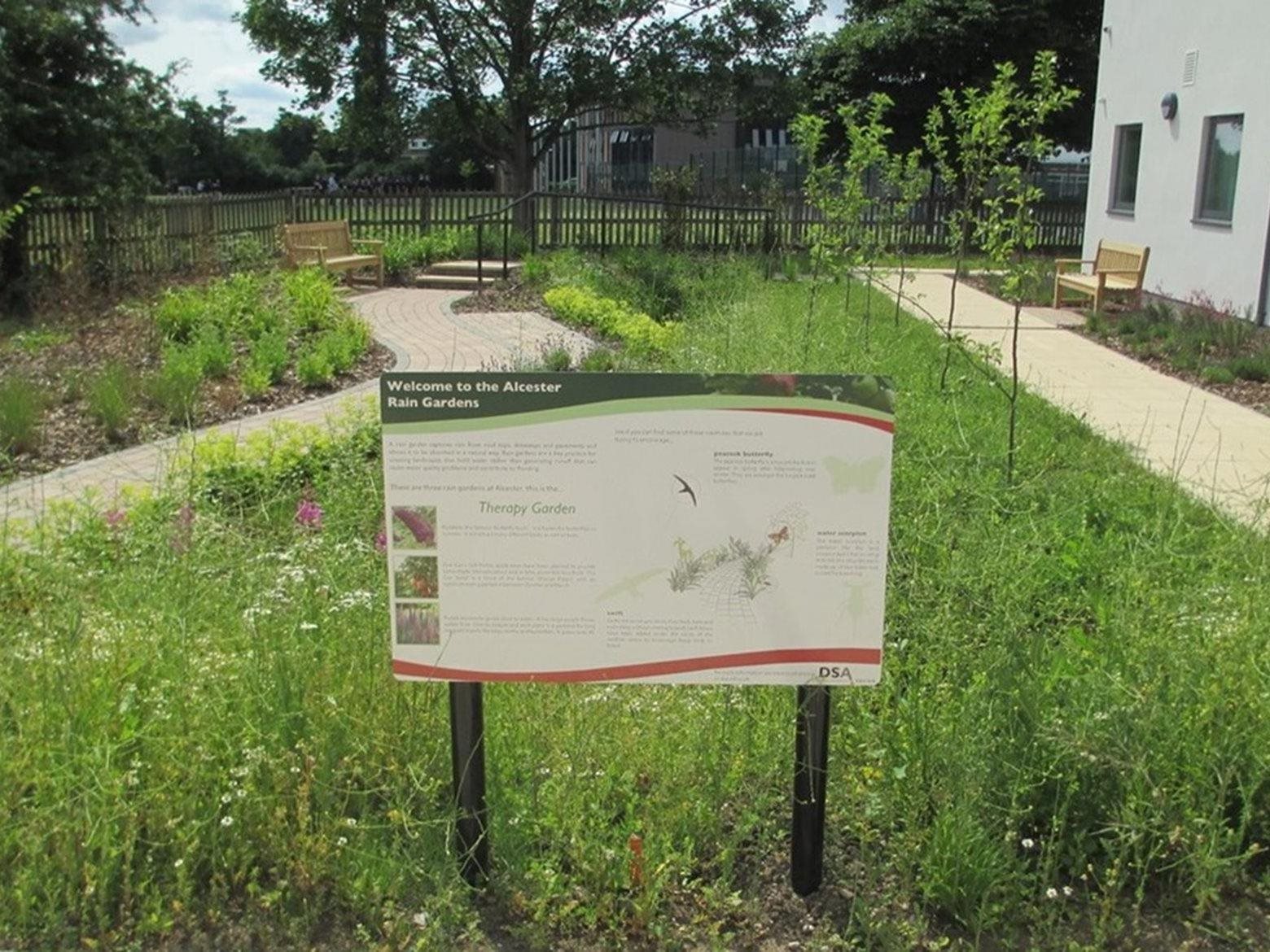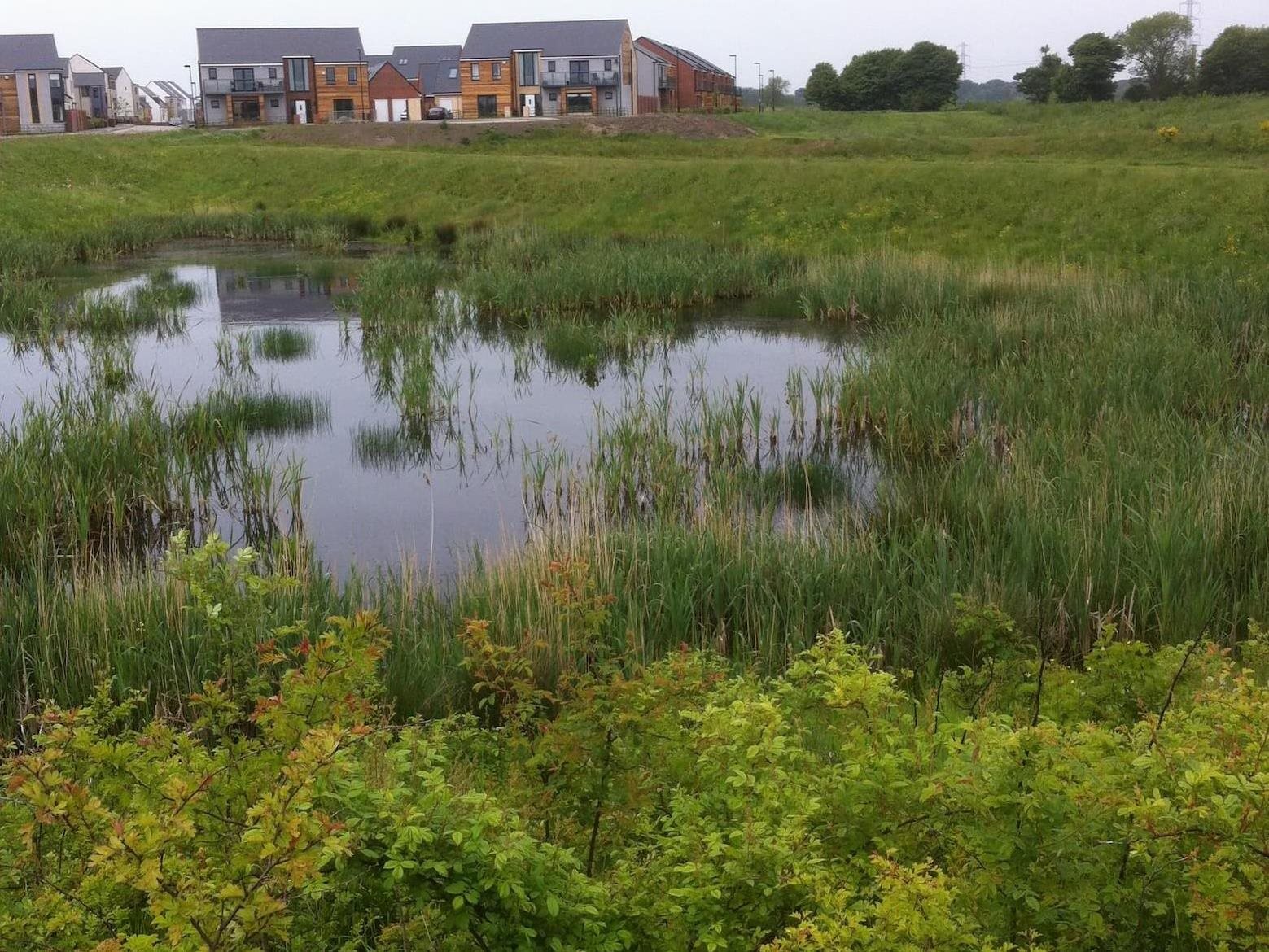Downloads
Global cities face a range of water challenges, driven by increasingly frequent and extreme storm events, drier summers, accelerating urbanisation and reductions in public green space. Blue-Green Infrastructure (BGI) and Nature-Based Solutions (NBS) are increasingly being used to address challenges across the full water spectrum while tackling social, economic and environmental issues.
In April 2021, the Royal Geographical Society (with IBG) hosted an online knowledge exchange event to explore the multiple co-benefits of blue-green cities, and how these can overcome the biophysical, socio-political and societal barriers to innovation in urban flood and water management.
Optimising the benefits of Blue-Green Cities
At the largest scale, a blue-green city aims to recreate a more natural water cycle by bringing water management and green infrastructure together. A blue-green city moves beyond sole consideration of flood and water infrastructure, and champions equitable distribution of infrastructure that is valued by citizens, communities and decision-makers.
The benefits of BGI include:
-
Environmental: reduced flood risk, enhanced biodiversity and ecology, improvements to air, soil and water quality, mitigation of urban heat islands, carbon sequestration and enhanced performance of urban water systems.
-
Social: improved health and wellbeing, amenity and recreation, reduction of crime, educational opportunities, noise attenuation, and building temperature regulation (cooling and/or insulation)
-
Economic: reduced damage costs from flood events, opportunities for economic growth and development, reduced pressure on existing grey infrastructure, lower maintenance costs and increased land value
Benefits can accrue at different scales. For example, at the site scale, green roofs and rain gardens reduce runoff and retain surface water, helping mitigate flood risk from small magnitude events. At the local/development scale, BGI helps protect other critical infrastructure from flooding. At the city/catchment scale, BGI benefits the water sector by improving water quality and managing stormwater. At all scales, the wider environmental and social benefits outweigh the flood only benefits, and can accrue to a greater range of stakeholders.

Green tram tracks in the central city area of Rotterdam, the Netherlands. Image: Emily O’Donnell

Sustainable drainage ponds in the Hanham Hall Eco Village, Bristol, UK. Image: Emily O’Donnell
Overcoming barriers to delivering BGI
Overcoming barriers to enable widespread delivery of BGI requires a variety of changes in governance, planning, design and assessment of benefits. This includes working with stakeholders to highlight the value of BGI as a new way of working with water.
Collaboration is essential in delivering high quality BGI. No one organisation is responsible or able to comprehensively deliver blue-green city aspirations. Siloed working is ineffective and leads to missed opportunities, but a group of stakeholders working to a common objective can help build support for BGI.
National agencies, like the Environment Agency, have a key role to play in brokering discussions and facilitating joined-up thinking. Active involvement by local residents and local communities creates a greater sense of ownership of the BGI and increased willingness to maintain the infrastructure. Engagement with planners is essential in determining how much BGI must be delivered in new developments, and in better capturing the value of land, to reflect the potential benefits that BGI can deliver.
Recommendations for action
Delivery of BGI needs to be regarded as an urgent and essential component of the UK’s strategy to address the climate and environmental emergencies, and improve quality of life for communities and individuals. The policy briefing recommends:
-
A national champion who has the power and influence to spearhead BGI campaigns and make rapid change in policy and practice
-
A focus on both new developments and retrofitting existing neighbourhoods, towns and cities to ensure equitable delivery of BGI rather than limiting benefits to those who can afford to live in expensive BGI developments. The alignment of BGI to current national objectives such as net zero, climate resilience, The Ten Point Plan for a Green Industrial Revolution, and post-COVID-19 recovery provide incentives for landowners to deliver BGI at city/catchment scale, with better integration of rural and urban policy around BGI.
-
Determine how environmental, social and economic ambitions can be aligned in local plans, to enable greater delivery of BGI.
-
Active engagement with local residents and communities to gain support and buy-in, to deliver BGI that is supported and valued by those who are the primary beneficiaries, and encourage communities in advocating for BGI to local and national government.

Rain gardens at the Alcester Primary Care Centre, Warwickshire, UK. Image: David Singleton

Sustainable drainage pond in the Newcastle Great Park development, Newcastle, UK. Image: Emily O’Donnell
About this event
In April 2021, the Royal Geographical Society (with IBG) hosted an online knowledge exchange event to explore the multiple co-benefits of blue-green cities, and how these can overcome the biophysical, socio-political and societal barriers to innovation in urban flood and water management.
The event was chaired by Oliver Harmer (Yorkshire Area Director, Environment Agency) and contributors included:
-
Emily O’Donnell (Research Fellow in Urban Flood Resilience, University of Nottingham)
-
Ana Mijic (Senior Lecturer in Water Systems Integration, Imperial College London, and Co-Director of the Centre for Systems Engineering and Innovation (CSEI))
-
David Singleton (Director, DSA Environment and Design)
-
Mark Fletcher (Global Water Lead, Arup)
The event was framed by geographical research in the Blue-Green Cities and Urban Flood Resilience projects, led by Professor Colin Thorne (University of Nottingham) between 2013-2016. The project was funded by the Engineering and Physical Science Research Council (EPSRC) and involved nine UK Universities in addition to numerous academic, industry and local government partners. The Urban Flood Resilience project followed in 2016, again funded by the EPSRC, and continues exploring how urban water systems might be transformed to deliver multiple benefits to the environment and society while creating flood resilient places.
Share this resource
This is an open access article under the terms of the Creative Commons Attribution License (CC BY NC 4.0), which permits use, adaptation, distribution and reproduction in any medium or format, provided the original work is cited and it is for non-commercial purposes. Please contact us for other uses.
How to cite
Delivering multiple co-benefits in blue-green cities. Case study. Royal Geographical Society (with IBG). https://doi.org/10.55203/PCLW1513

